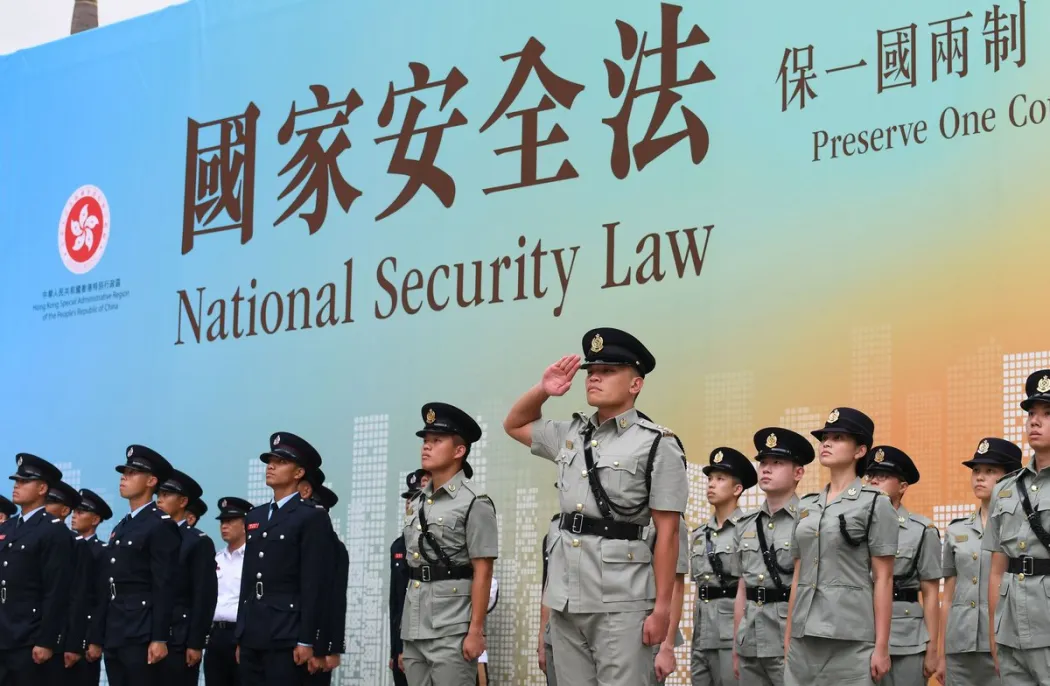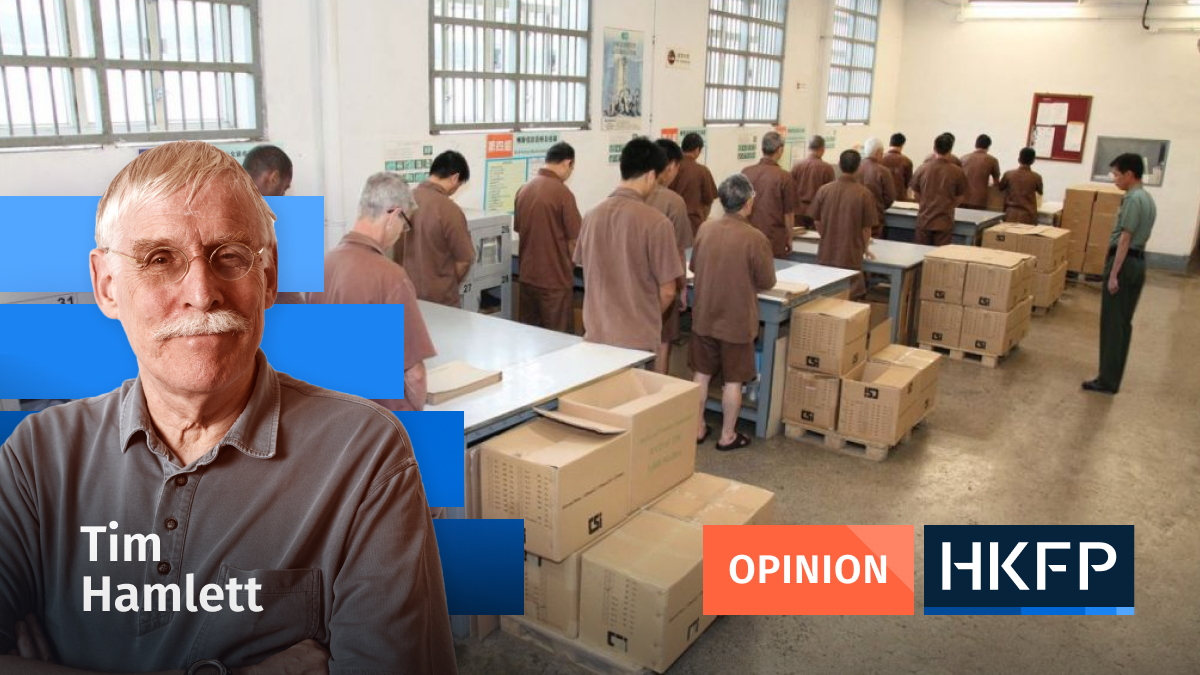One of the complaints that lawyers routinely make about the national security law (NSL) is that it is not clear enough about what is forbidden and what is not. Eva Pils, a professor of law at King’s College London, described the wording as “broad and malleable,” wondering if “mere criticism of the central party state [could] be treated as subversion or inciting subversion.”
Eric Cheung, who teaches law at the University of Hong Kong, was quoted as saying, “It is very broad. Basically, anything can amount to national security threats. No one will feel safe, even foreigners.”
Tom Cheshire, Sky News’s Asia correspondent, wrote, ”Secession, subversion, terrorism and colluding with foreign forces now all carry a maximum sentence of life in prison. But they are drawn incredibly widely.”
The government response to this has usually come from the Secretary for Justice, Teresa Cheng, who has developed a little side-line in writing for publication. So in a letter to the Financial Times, she wrote that the “NSL expressly specifies the nature of each offence.” In a later epistle to the Times, Cheng said the law “clearly specifies the elements of each offence.”
Cheng also provided a more elaborate legal version for Hong Kong Lawyer – the Law Society’s print offering for solicitors – which stated that “[t]he elements of each of the four offences in the NSL encompass the actus reus and mens rea and are clearly set out.”
Cheng can perhaps be excused for her fondness for Latin, which no doubt many lawyers share. The actus reus is the prohibited act and the mens rea – or criminal mind – concerns the intentions of the perpetrator.
Unfortunately, Cheng does not provide any detailed examples. Non-lawyers may suspect that as Cheng’s qualifications for her post include only a stellar career in commercial arbitration and bosom palship with Chief Executive Carrie Lam, there may be other possible interpretations of the merits of the NSL as a piece of criminal legislation.

But as non-lawyers, we can hardly assess this. One crude comparison is possible. Both the NSL and Hong Kong’s Crimes Ordinance have sections (strictly speaking, the NSL bit is a part of an article) dealing with sedition. This means that sensation seekers with time on their hands (I have retired) can engage in the entirely meaningless but interesting activity of comparing their length – which is quite different.
The Crimes Ordinance version starts at Section 9, which is entirely devoted to defining a “seditious intention.” It has two subsections, containing six and four paragraphs respectively, and runs in total to 293 words. This is followed by Section 10, which details the offences, and has five subsections for a total of 310 words.
Section 11 is a quicky on proceedings and runs to two subsections totalling 40 words. Section 12 is on evidence and is even shorter, at 18 words. Section 13 deals with search warrants and runs to 101 words. Section 14 deals with the powers of the police to remove subversive material and has three subsections sharing eight lettered paragraphs for a total of 155 words.
The structure of the NSL segment is naturally quite different. Article 22 has a preliminary paragraph (38 words), four numbered sub-articles describing the actual offences (124 words in total) and a concluding paragraph about sentencing (78 words), giving a total of 240 words for that article. Article 23, which is about aiding, abetting, encouraging etc., adds another 105 words. And that’s it: a total of 345 words, nearly a tenth of which are consumed by the phrase “the body of power of the Hong Kong Special Administrative Region”, which occurs three times.

The NSL version, then, runs to just over a third of the length of the Crimes Ordinance sections. Even if you disregard the “power to remove” bit, which the NSL does not mention at all, the Ordinance version is still twice as long. It is difficult to believe that this level of abbreviation has been achieved without some loss of detail.
Now of course brevity is not necessarily a bad thing. Sun Tzu’s Art of War barely fills a slim paperback, while Clausewitz’s On War came out in three hardback volumes. Both books are regarded as important landmarks. No doubt if the anonymous author of the Crimes Ordinance had known his work was going to be published only in handwritten Chinese characters on bamboo strips, he would have tried for a more compact offering.
Having said which, it does rather seem from the extreme disparity in the level of detail offered that the two sedition segments cater for radically different ideas of how legal proceedings work.
For the author of the Crimes Ordinance, the function of the defence counsel is, among other things, to question whether the conduct complained of actually contravenes the relevant law, and the function of the judge is, among other things, to decide whether that is the case or not.
For the authors of the NSL, senior mainland apparatchiks, the function of the defence lawyer is to aid the accused in the drafting of his confession, and the function of the judge is to decide whether the resulting work is sufficiently mellifluous to justify a reduction in sentence. Statutes do not have to be argument-proof. They merely have to guide the defence in how to lose accurately, completely and solemnly, as the occasion requires.

No doubt Cheng will continue to encourage the view that the NSL is detailed and specific. Readers of the Times may swallow this. I imagine local observers would be more impressed if she could persuade local supporters of the status quo that not every sign of opposition or discontent should be interpreted in terms of national security, particularly if that interpretation is questionable.
I notice, for example, that the NSL on sedition explicitly covers only actions by force, the threat of force, or other unlawful means. In other words, if there is no force, no threat, and no breach of any other law, then the NSL is not infringed. I take this to mean that there can be no legal requirement for the organisers of marathons to censor contestants’ shorts, tee-shirts or tattoos, however political.
Indeed, the NSL also states (Article 4) that the rights and freedoms of Hong Kong citizens shall be protected. I do not believe it was the intention of the drafters to make it a criminal offence to have “Hong Kong add oil” on your running shorts.
Support HKFP | Policies & Ethics | Error/typo? | Contact Us | Newsletter | Transparency & Annual Report | Apps
| HKFP is an impartial platform & does not necessarily share the views of opinion writers or advertisers. HKFP presents a diversity of views & regularly invites figures across the political spectrum to write for us. Press freedom is guaranteed under the Basic Law, security law, Bill of Rights and Chinese constitution. Opinion pieces aim to point out errors or defects in the government, law or policies, or aim to suggest ideas or alterations via legal means without an intention of hatred, discontent or hostility against the authorities or other communities. |
Help safeguard press freedom & keep HKFP free for all readers by supporting our team

More HKFP OPINION:
HKFP has an impartial stance, transparent funding, and balanced coverage guided by an Ethics Code and Corrections Policy.
Support press freedom & help us surpass 1,000 monthly Patrons: 100% independent, governed by an ethics code & not-for-profit.










